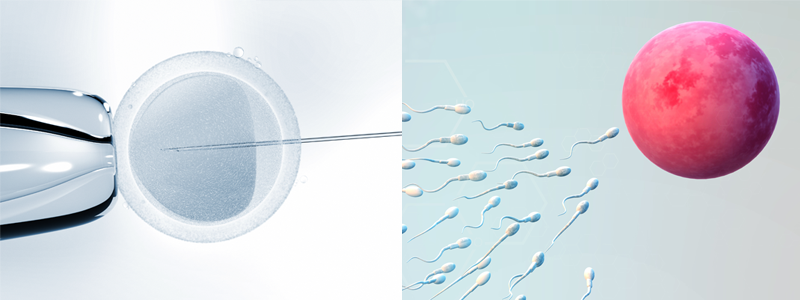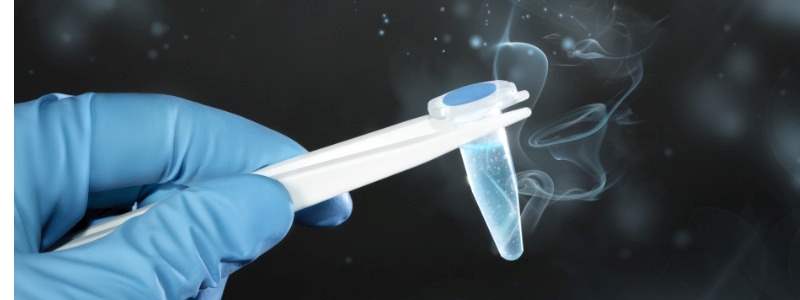Guest blog by Jessica Hepburn: director of fertilityfest.com and author of ‘21 miles’ and ‘Pursuit of Motherhood’
For those who are relatively new to IVF I’m going to outline the key parts of the ivf treatment process so you know what to expect. It’s important to acknowledge that there are a range of different IVF protocols and no two cycles are exactly the same, but there are certain aspects of treatment that are common to everyone.
Here is the detailed IVF process in 6 steps:
Step 1: Stimulating your follicles
Step 2: Egg collection under sedation
Step 3: Find out how many eggs have been fertilised
Step 4: Embryo progression: days 2 to 5
Step 5: The 2 week wait before a pregnancy test
Step 6: The pregnancy test
Step 1: Stimulating your follicles
The first step in the IVF process is finding out how your body responds to stimulation. Unless you’re undergoing ‘no drugs’ natural IVF, stimulation involves injecting yourself with hormone drugs. Before I embarked on IVF treatment, I had never injected myself before and the first time is a bit terrifying. The clinic will show you what to do but if the nurses are bit fast and brusque and you’re unclear or worried then do keep asking until you feel sure. But I promise you will quickly get used to it and soon you’ll be shooting up under the desk at work and in public toilets like a regular drug addict!
Naturally you would only have one dominant follicle a month which would release one egg, but with IVF you’re trying to develop more follicles so that you can collect more eggs. Ideally what you want is a good number of follicles in both ovaries developing at a similar size, and be warned this will become an emotional obsession. How many follicles? Until, that is, you go onto the next IVF step.
Step 2: Egg collection under sedation
Soon the number of follicles becomes irrelevant; now the important question is how many eggs? Egg collection is usually done under sedation and doesn’t hurt, in fact if you’re anything like me it will be the best sleep you’ve ever had. Not every follicle will release an egg, and not every egg released will be mature. As soon as I woke up from the anaesthetic, it was always the first question I asked. Has the IVF procedure worked? How many eggs are there?
Step 3: Find out how many eggs have been fertilised
The next step in the IVF process comes the morning after egg collection: how many eggs have fertilised? Whether you have conventional, natural or mild IVF treatment (letting egg and sperm do their thing in a petri dish) or ICSI (injecting sperm into egg) you won’t know until 24 hours later whether any of your eggs have fertilised.
In IVF it’s rarely, if ever, 100 percent, which is why you need a good number of follicles and then a good number of high quality eggs in order to increase your chances of success. Everything that’s happened over the previous two weeks no longer matters. This is now regarded as Day 1; you’re halfway through, just three more steps in the IVF process
Step 4: Embryo progression: days 2 to 5
Over the next few days your embryos begin cell division and all you can do is watch and wait. As each day passes some will progress, others will naturally falter and fail. From Day 2 of your embryos’ life they start to be graded, and this influences the decision as to which ones should be put back when. In the UK, currently, if you’re under thirty you can have one embryo back; under forty, two embryos; and over forty, three embryos.
As soon as it becomes clear which embryos are the best, your clinic will want to put them back where they belong. If you have produced a small number of eggs, it becomes clear pretty quickly which to put back. If you have produced a larger number and all of them are developing nicely, they are likely to hang on to see which embryos develop into blastocysts. This is the term used for embryo development on Day 5. In theory, an embryo that becomes a blastocyst has the best chance of survival, but the embryos will only be cultured to this stage if there are more than a few good ones of similar quality.
Step 5: The 2 week wait before a pregnancy test
The penultimate hurdle in the IVF process is the dreaded two-week wait: the period between your embryo transfer and pregnancy test (although strictly speaking the two week starts on the day of egg collection).
After all the injections, scans, prodding and poking you are left all on your own in charge of your embryos waiting to see whether they will implant and develop. Time becomes interminable. You’ll become hyper-aware of every twinge, or lack of twinge, in your body, oscillating between thinking it’s a good sign, then thinking it’s bad. Every physical movement or negative emotion feels like it might have jeopardised the process. You know that being positive is important, but you also don’t trust yourself to deliver. But remember that wonderful acronym, PUPO – pregnant until proven otherwise. Try to believe it.
Step 6: The pregnancy test
And finally, the test itself… when all that stands between you and happiness is a double line. But weirdly having longed for the wait to be over, you may now wish it could continue. After all, there’s no guarantee of a medal at the end of this hurdle race, and to prolong doubt is to prolong hope.
I would urge everyone to not just do a home pregnancy test, but to go into their clinic for a blood test to measure the levels of the pregnancy hormone hcg. It’s hard walking in and then waiting for the result but it’s really important. Even if you’ve been spotting or bleeding and you’re convinced it hasn’t worked, you don’t want to end up like me being rushed into a hospital with an ectopic pregnancy three months after what I thought was an unsuccessful round of IVF. However, hopefully this will not be you. Hopefully your test will be positive.
Sometimes I do feel a bit guilty outlining the steps of the IVF process because, in a way if you’ve never been through IVF before, the first time you go through it you are blissfully ignorant of what later become emotional obsessions. I will say this though: nothing that me or anybody can say to you will stop the obsessions, so just accept it and don’t punish yourself for having them.
In all my years of obsessing about fertility treatment: how many follicles; how many eggs; how many fertilised; the two week wait; and the pregnancy test...none of it really matters because your thoughts don’t directly control what happens. At the end of the day all you need is one good egg and one good sperm.






